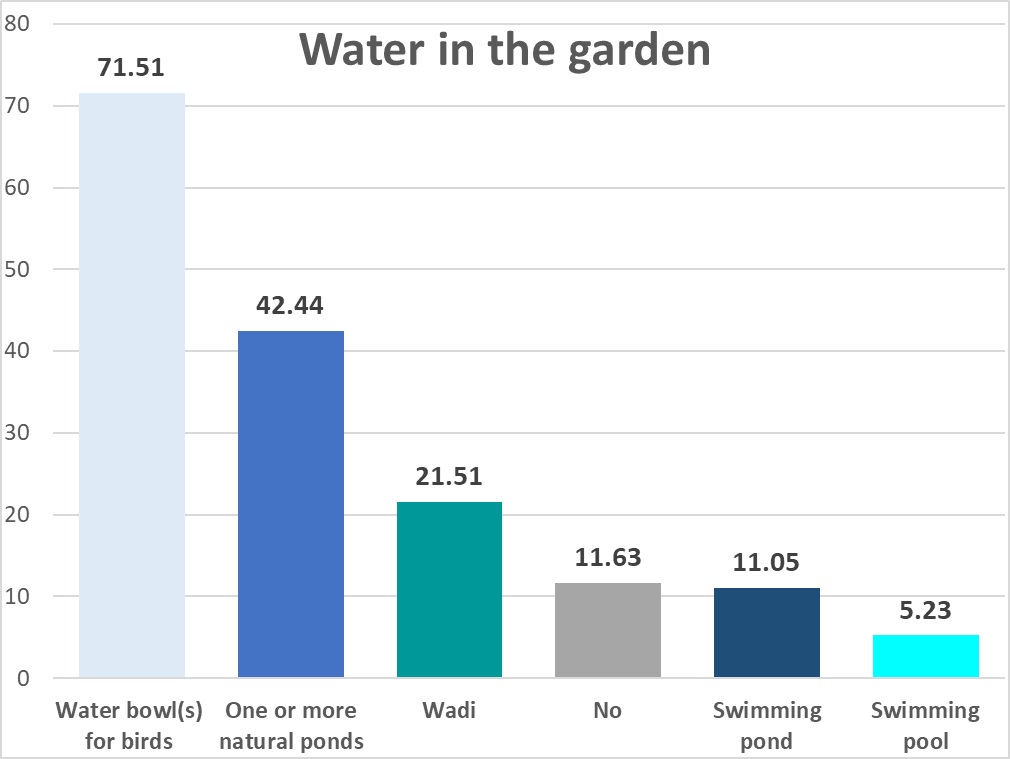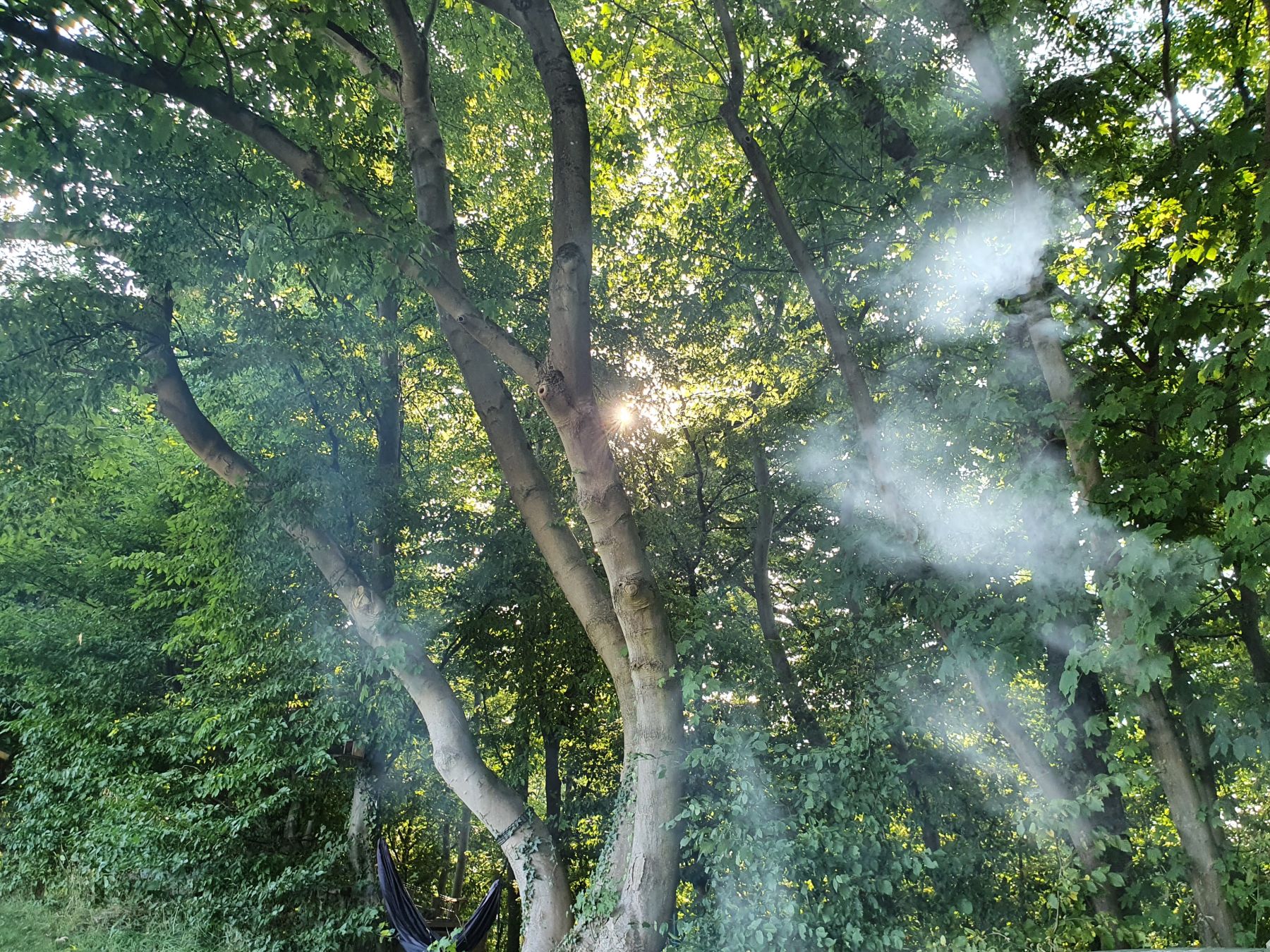
.jpg)
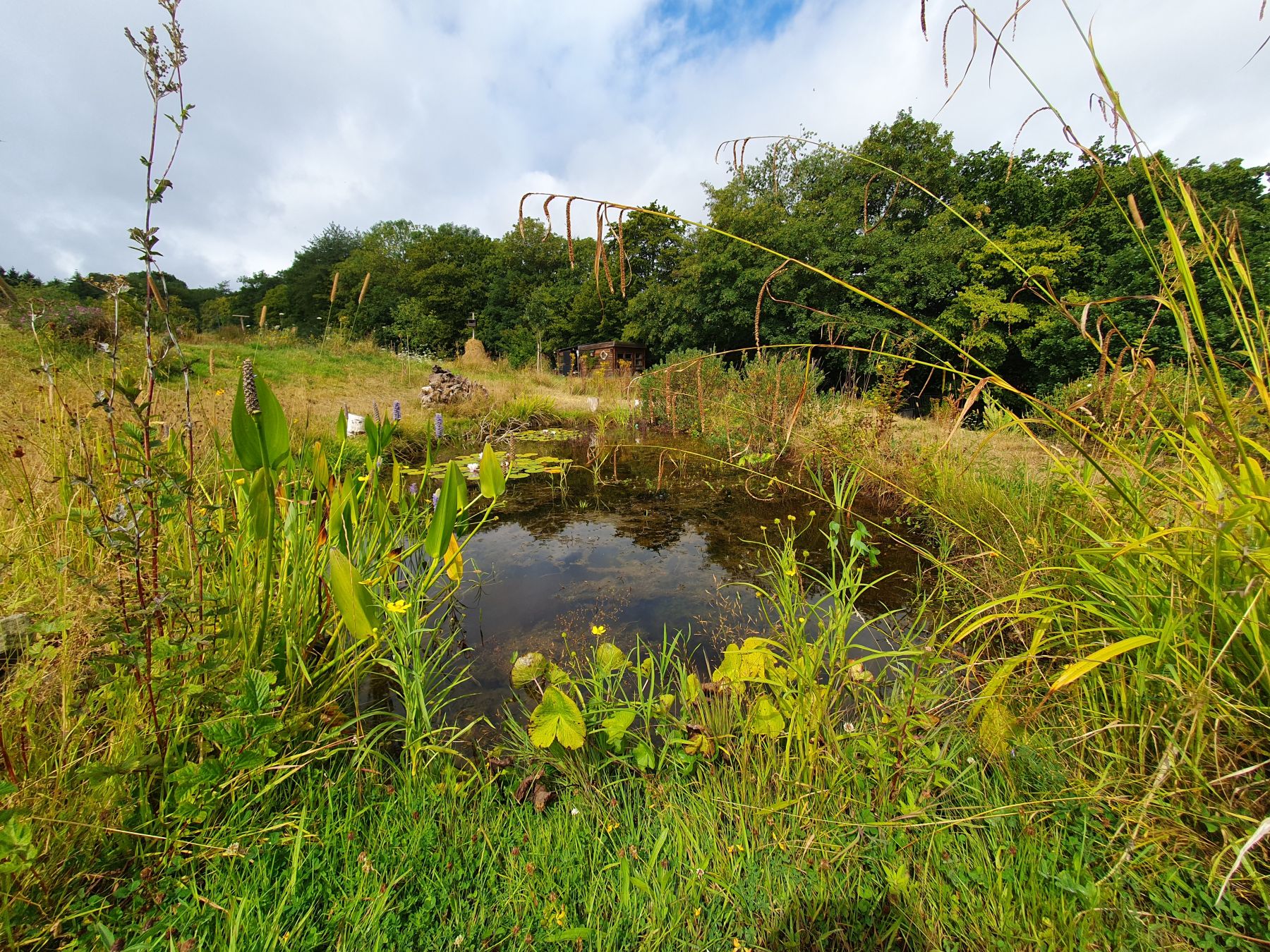
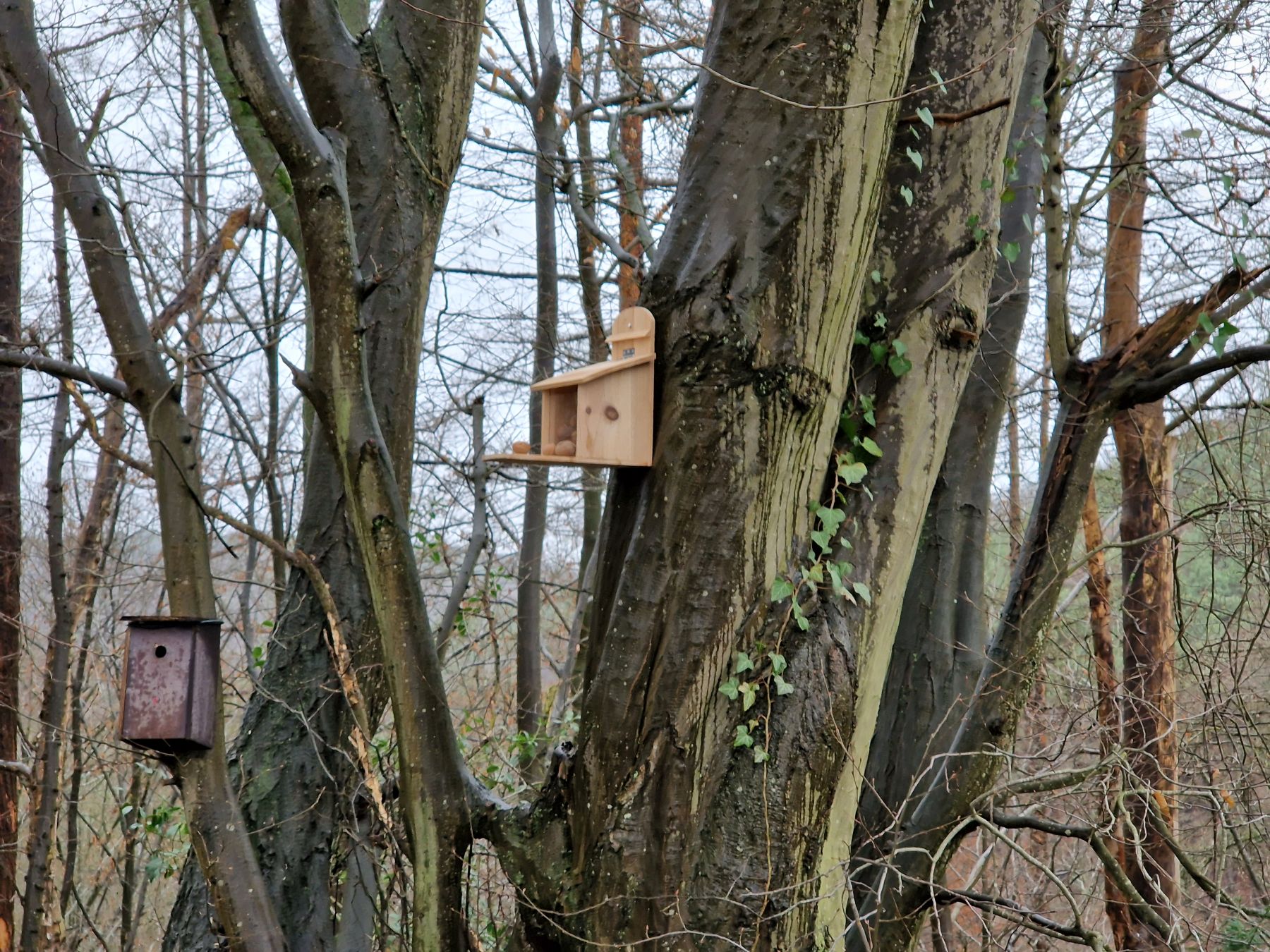

What does the garden survey tell us?
28/12/2023
Thanks for participating in our survey "How ecological is my garden?". Almost 200 participants completed the questionnaire. The scores vary widely, from a low score of 4/20 to an average score of 13/20 and high or near maximum scores of 17 to 18/20. Clearly all participants have an interest in ecological gardening, some just starting out, while others are already fully on board with the basic principles.
In any case, you can still complete the survey here and receive our 10 eco-gardening tips by email if you leave your email address. We will gladly go over the results with you:
I am a big fan of dead wood because it is alive! Standing dead wood is especially important, not only for woodpeckers but also for numerous invertebrates such as beetles, woodlice, centipedes whose life cycle is linked to dead wood.
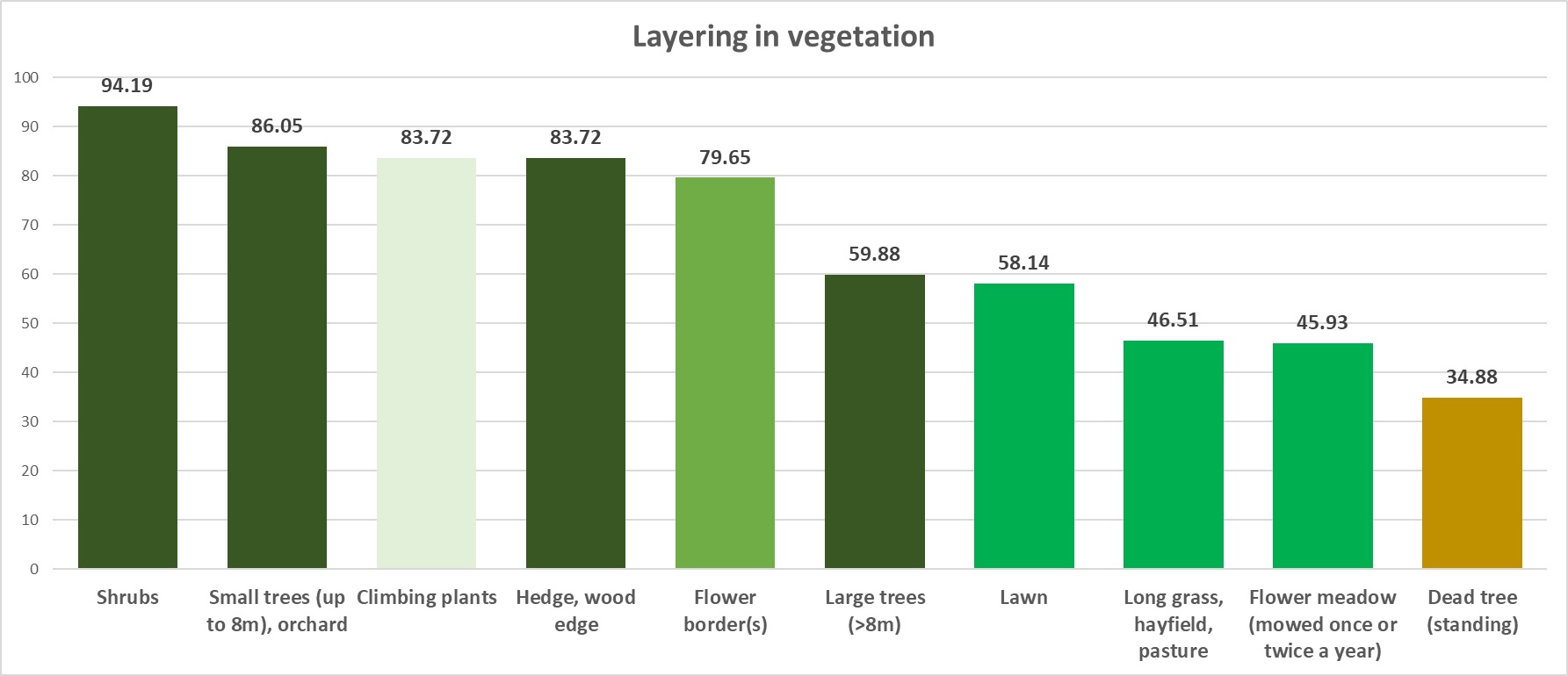
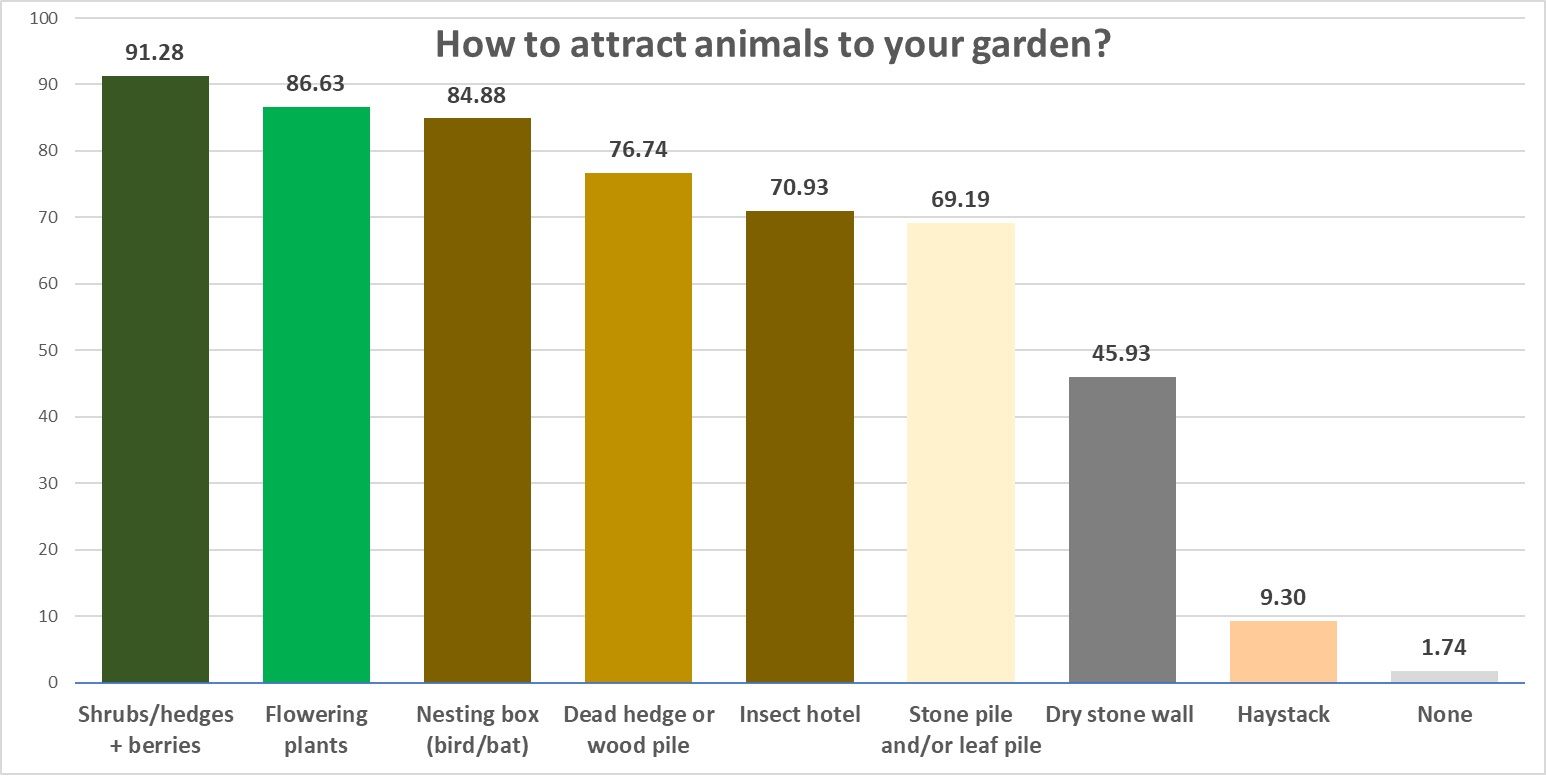
In any case, you can still complete the survey here and receive our 10 eco-gardening tips by email if you leave your email address. We will gladly go over the results with you:
1. The vast majority (87%) of participants never use pesticides, herbicides or fertilisers. 11% still use them occasionally and only 1% use them systematically.
Chemical products have no place in an ecological garden because of their long-term detrimental impact on the soil and these are often not very selective and thus have a major impact on biodiversity, so best to get rid of them!2. In terms of stratification in vegetation, there was quite a bit of variation in most gardens, so that's tops anyway. The categories shrubs, small trees (<8m), climbing plants, hedge or hedge and flower border were the most common These were followed by short lawn and large trees. As expected, flower meadows were less common (only 45%) and standing dead wood only present for one-third of the participants.
Flower meadows are not only beautiful, but their importance for the survival of our pollinators cannot be overestimated. Many other species also find shelter in them. I am a big fan of dead wood because it is alive! Standing dead wood is especially important, not only for woodpeckers but also for numerous invertebrates such as beetles, woodlice, centipedes whose life cycle is linked to dead wood.

3. There was some confusion and discussion around paving your plot or the share of green versus grey space. 88% of all participants had 2/3 green space and 1/3 grey space. Some did not count their house in the calculation, which was however the intention.
The lesson here is mainly: think about whether all the paving on your plot is necessary and whether you can flip tiles or break out some concrete for the benefit of nature. That way, your garden will have a greater water buffering capacity and more greenery. Of course, you can always collect rainwater on roofs in rain barrels or divert it to a wadi or pond. 4. Surprising to us was to see that in 52% of all gardens, the majority of plants are native. Surely this indicates that our audience is already well aware of the benefits of native vegetation. More than a quarter (27%) have a 50-50 native species - cultivars/exotics. 17% have only a quarter of their vegetation native. 4% of participants did not know exactly how many plants are native.
We like to make a case for native plant species in an ecological garden, certainly a minimum of 50% of all your garden flora, ideally more. And not only in terms of quantity of plants, but also in terms of species diversity. After 1000s of years of co-evolution, there is a strong interdependence between many insect species and native plants crucial for their survival. This blog takes a closer look at this.5. Regarding water in the garden, 71% of the participants place bird water dishes. 42% have a pond, 20% a wadi, 11% a swimming pond and 5% a swimming pool.
Water brings life to your garden! Even a small water feature, a tub of water or a shallow water dish counts! It is often the only place for many species to quench their thirst, take a bath or hunt for insects. If your garden is ecological and diverse enough, mosquitoes are not a problem. The smaller the water feature, the more often you need to change the water. 6. The last question looked at animal-friendly interventions. It is great to see how many participants have bushes full of berries, as well as nectar plants. Many place nesting boxes and insect hotels. A dead hedge or wood pile provide shelter for numerous species, as well as leaf and stone piles. Less than half of the participants have a dry stone wall and just under 10% have a haystack.
There are lots of small interventions in your garden that can provide fauna with one of their basic needs (food, water, shelter, nesting opportunities, variation in vegetation), so be sure to get inspired to do even more.

At the end of this year 2023, IMBY has finished its first year of blogs and social media. Many thanks to our followers. Please do not hesitate to give us feedback or share your questions. Meanwhile, An has also successfully completed her Inverde training and is now an ecological consultant. Frank is halfway through his 2-year course of natural vegetable gardening at CNB. With IMBY, we now want to go down a professional path and are happy to provide tailor-made ecological advice for gardens, public spaces and even business premises.
We are currently finalising our website where you will find more info about our services early next year. Of course, we will also continue to share tips and blogs to get started yourself, so be sure to keep following us.
Frank and I wish you a wonderful, healthy 2024 with even more garden fun, with more biodiversity, more variety, and fine discoveries. Be sure to share your photos of your ecological garden with us on social media.Comments
- Prima terugkoppeling, erg interessant! Doe zo voort zou ik zeggen 😊 (Johan)
Add a comment



